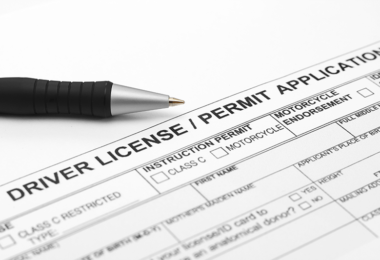Home / Modules / Components / License plate identifiers (decals) for initial license holders / Key research findings
Key research findings
- License plate identifiers are a relatively new enforcement tool in the United States. New Jersey is the only state in the U.S. that requires drivers in the GDL system to indicate their licensing status and mandate learners and intermediate license holders to affix red reflective decals to front and rear license plates. However this policy, intended to facilitate police enforcement of GDL requirements, has been in place for many years in some jurisdictions in Europe (e.g., France, United Kingdom), Australia (e.g., New South Wales, Victoria), Canada (e.g., British Columbia, Newfoundland) and other countries (e.g., Japan). In Canada, British Columbia implemented a GDL program in 1998 with a mandatory decal requirement.
- The use of license plate identifiers has been controversial, at least initially. This policy was initially controversial when it was introduced in New Jersey as a result of concerns about the identification and potential targeting of teenage drivers.2 The policy was unpopular among both teens and parents of teens, and use rates appeared limited. However, a survey of police departments in New Jersey indicated that predator incidents were not an issue3 and it has been reported that the decal requirement was associated with crash reductions among New Jersey teens in its first year4 and these reductions continued during the second year of the law.5
- Parents support license plate identifiers. A national survey of parents of teenagers Williams 2011 found that about two-thirds (65%) of respondents approved of license status identifiers (decals) on vehicles for restricted license holders.6 However, when decals were first introduced in New Jersey, both teens and their parents were largely opposed. For example, only 22% of teens subject to the policy approved of it.7
- More research is needed to strengthen the case for license plate identifiers. Despite the fact that there is evidence that the NJ decals policy reduces crashes, further evidence is needed regarding its long-term effects, and the mechanisms for positive effects. Initially, observed use rates of decals were modest, and although citations for GDL violations other than for non-use of decals increased in the first few months of the law, they subsequently dropped back.5 Information is needed on current use rates of decals, GDL citation rates, attitudes of parents, teens, and police about the law, and the extent to which non-users may drive more carefully due to concern about the $100 fine for non-use.





